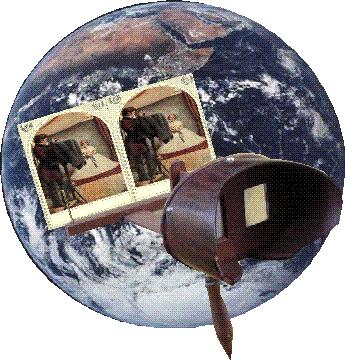
Biography: Carleton Emmons Watkins was born in Oneonta, upstate New York. He went to San Francisco during the gold rush, arriving in 1851. He traveled to California with Oneontan Collis Huntington, who later became one of the owners of the Central Pacific Railroad, which helped Watkins later in his career.
His interest in photography started as an aide in a San Francisco portrait studio, and started taking photographs of his own in 1861. He became interested in landscape photography and soon started making photographs of California mining scenes and of Yosemite Valley. He experimented with several new photographic techniques, and eventually favored his "Mammoth Camera," which used large glass plate negatives, and a stereographic camera.
Significance: Most of the work of Watkins is based on the mining scenes of the wild California while the Gold Rush. It's mostly about the historical timing and how he managed to capture that particular movement that was really important in the history of the USA.
Techniques: He used stereoscopy camera in order to create "stereoview" photographs: Two images where placed one next to the other in order to create an ilusion of depth. It was the very first device to "enhance" the reality and to create an illusion of 3D

Motivations: I believe there is a form of metaphor in this as Watkins was a young and naive photographer exploring new techniques and new exciting photograph of a place that was young and just barely explored.
Contemporary Photograph: Takeshi Murata
Biography: Takeshi Murata was born in 1974 in Chicago, IL. He graduated from the Rhode Island School of Design in 1997 with a B.F.A. in Film/Video/Animation.
Significance: His work take advantage of video art, which is where most of the industry is going forward these days. Most of his work is abstract creating hallucinating experiences by piecing together different video clips.
Composition: The author construct video art and sequential art in movement completely different from the standard way we think of video art. He usually mixes clips and media or sometimes creates psychodelic experience through using bits and parts of film and reconstructing them by placing them together or juxtapozing it.
Concept/Aboutness/Idea: I think that he is trying to show how much we can do with so little and go beyond this idea of "sequential" art as having a structure or a solid foundation. Also, how the experience of mass media (since most of his clips are from media broadcasting) can be somewhat dazing and intrusive.
Method: What I find interesting is his take on sequential art and how much he can create on moving images with only little effects and clever editing.
Motivations: At the time he is presenting his art, video and broadcasting media were the rulers and dictators of what the average user knew about the outside world. They were the primary dealers of knowledge and as a visionary, he defies this concept by destroying it using simple editing techniques. Now with the appearance of the internet, we question the knowledge and utility of broadcasting media, since we can get the information through using the social media.
Your Opinion: I find incredible interesting that he creates appealing art out of ordinary and casual clips. I also find the psycodelic experience to be original and as an audience it intrigues me and draws me in.
No comments:
Post a Comment